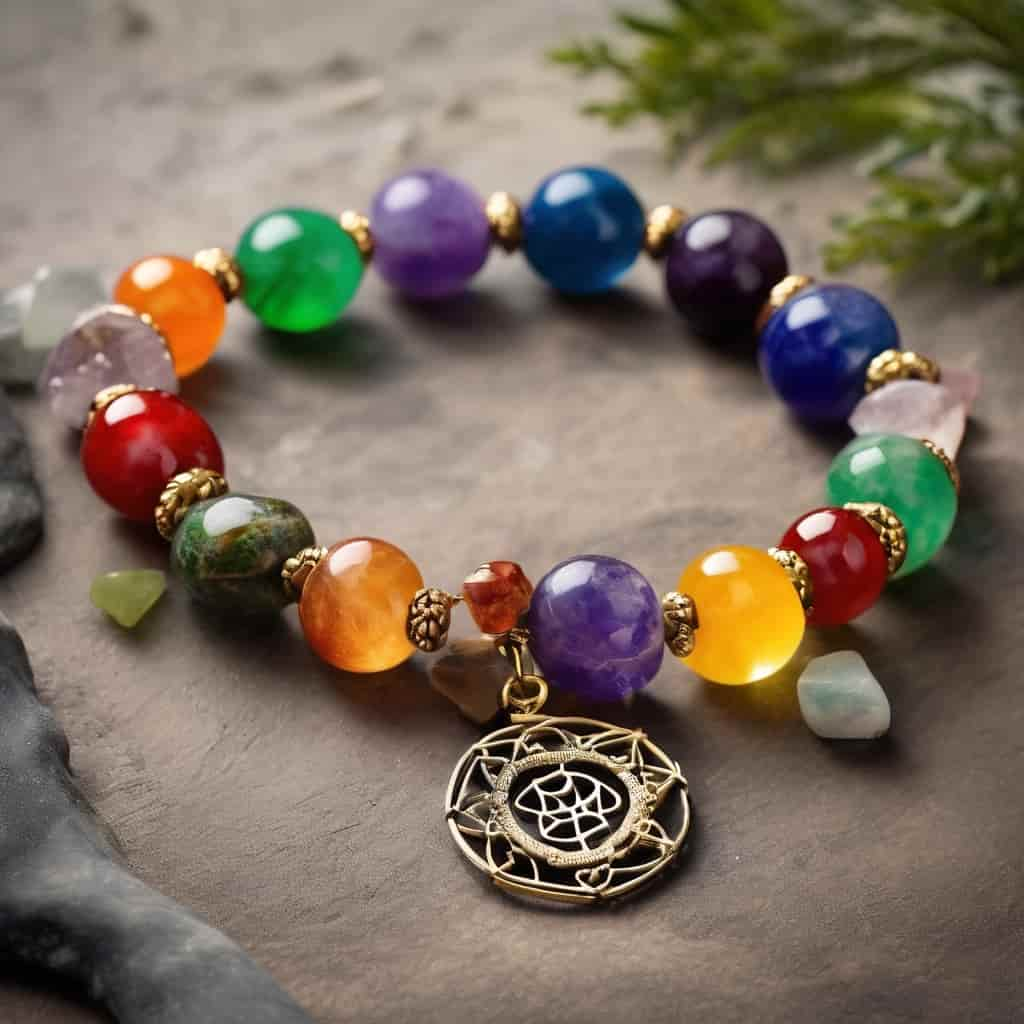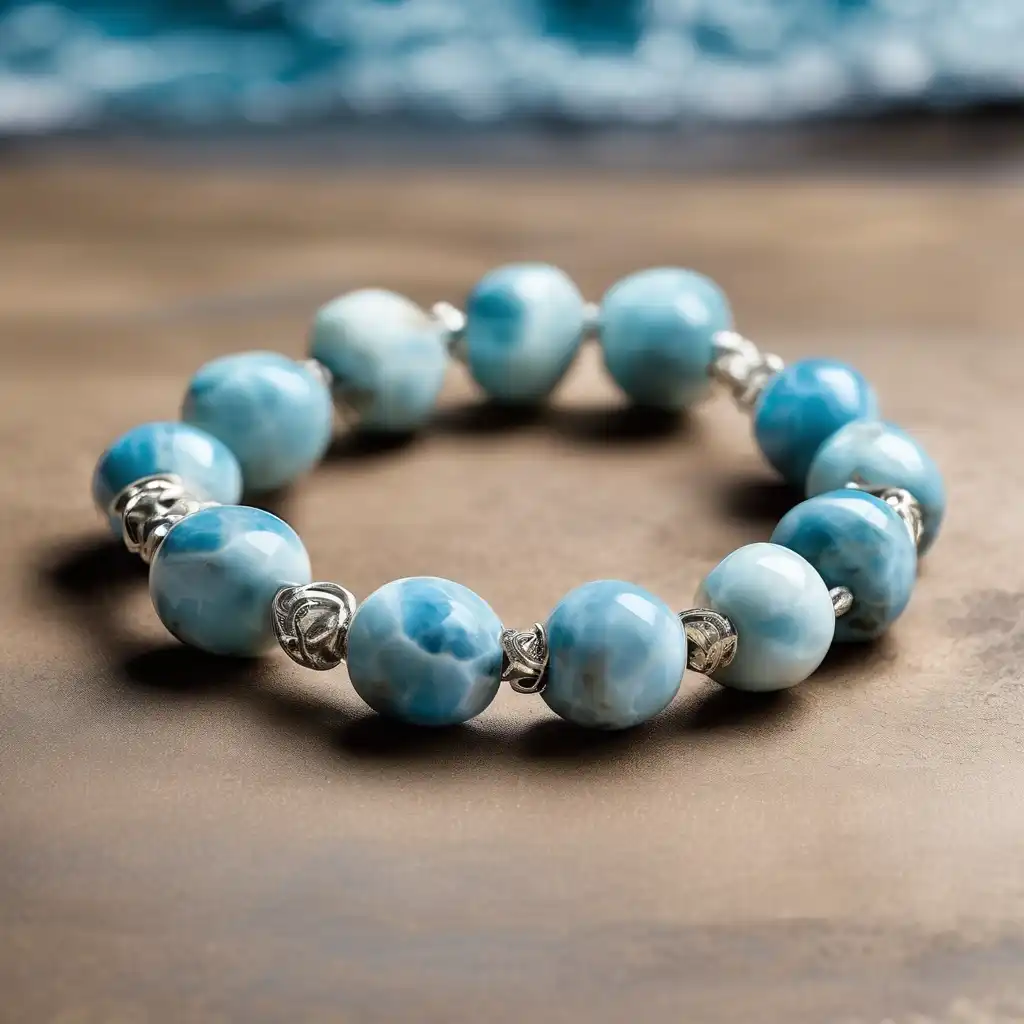Beading Color Meanings and Emotional Expression
The Authority of Color in Beadwork
In the domain of handmade jewelry, color is not merely an aesthetic choice; it is a statement of energy. Every color speaks a different emotional and spiritual tongue. This is why understanding beading color meanings is crucial for crafters, spiritual seekers, and artists alike.
According to color psychology, a color influences human behavior. Red drives activity; blue calms the mind; green brings emotional balance. Combining these hues into beading creates wearable energy instruments. Particularly with colored beads, jewelry created with intention can help improve mood, focus energy, and reflect the inner condition of the wearer.
Roots of Beading Color Meanings in Culture
For centuries, different civilizations have used beads and their colors to tell stories, define identity, and offer protection. In Africa, for example, women adorn themselves with color-coded waist beads to mark significant life milestones and embody specific energies—such as red symbolizing fertility or blue representing protection. These vibrant strands are not just decorative; they hold deep personal and cultural meaning, connecting wearers to their heritage and inner power.
In other parts of the world, beads also play sacred and symbolic roles. In Buddhism and Hinduism, mala beads are used during meditation, with each bead often assigned a color that aligns with the energies of the chakras. Similarly, Native American beadwork is rich with meaning, using color combinations to honor ancestors, express harmony with nature, and maintain spiritual balance. Across all these traditions, the message is clear: color is never neutral. Beads serve as powerful tools of intention and design, carrying emotional and spiritual significance through every hue.
Why Beading Color Meanings Are Still Important Today
In today’s spiritual and design circles, the purposeful use of beading color meanings has become increasingly popular. Many people select colored beads for emotional healing, manifestation, chakra alignment, and energetic protection. Even when a person isn’t consciously choosing a bead for its symbolic meaning, their inner energy often guides the selection. For example, someone experiencing anxiety might naturally gravitate toward calming blue beads, while someone embracing a new beginning may be drawn to green beads symbolizing renewal and growth.
These unconscious choices reveal the intuitive connection between color and emotion. By understanding beading color meanings, jewelry makers can create pieces that not only look beautiful but also carry emotional depth and purpose. This awareness elevates the craft of stringing beads into a meditative and intentional act—one where every bead holds its own unique significance, contributing to a piece that resonates both spiritually and aesthetically.
Beading Color Meanings and Emotional Expression
Color isn’t just something we see—it’s something we feel. Most people subconsciously follow their emotional needs when selecting beads. The colors we wear, use, and craft with often express what’s going on inside us, even when we can’t put those feelings into words. That’s the emotional power at the heart of Beading Color Meanings. Every hue holds a unique vibration and message. Warm colors such as red, orange, and yellow tend to energize and excite us, while cool tones like blue, green, and purple calm and stabilize our emotional state.
These psychological effects are why many artisans and spiritual practitioners design beadwork based on the emotions they want to experience—or help others invoke. For instance, wearing a bracelet made of soft pink or rose quartz beads is not just about beauty; it radiates a sense of compassion, love, and emotional warmth. On the other hand, a bold necklace featuring black and red stones may symbolize strength, protection, and a deep connection to the earth. These selections aren’t random—they’re deliberate, emotionally rich, and energetically purposeful.
What Do The Different Colors of Mood Beads Mean?
The thermochromic color-shifting qualities of mood beads make them a remarkable illustration of the connection between emotion and color. While mood beads respond to body temperature, they also represent a deeper emotional condition. People thus turn to their hue shifts as emotional cues.
Usually, common mood bead colors reflect:
| Color | Emotional Interpretive Meaning |
|---|---|
| Black | Tension, anxiety, extreme tiredness |
| Gray | Nervousness and ambiguity |
| Green | Calm, equilibrium, inner tranquility |
| Blue | Contentment, faith, honest communication |
| Purple | Passion, love, spiritual awakening |
| Red | Enthusiasm, passion, sensuous power |
| Amber/Orange | Transition, excitement, inquiry |
Though not conventional gemstones, mood beads draw attention to a crucial element in Beading Color Meanings: colors interact constantly emotionally with our bodies. Your beads’ colors or those you like can reveal your feelings, even if you’re unaware of them.
Design with Mood and Color in Mind
Knowing color psychology lets you create jewelry with more than simply visual harmony. You start to create with emotional purpose.
Typical design examples that make use of the meanings of beading colors include:
- Anxiety relief bracelets: Blue lace agate, white howlite, and moonstone taken together will help with serenity, grounding, and emotional clarity.
- Confidence mala: Citrine, carnelian, and yellow jade can enhance self-esteem, inventiveness, and optimism.
- Grief or heartbreak necklace: You can use rhodonite, smoky quartz, and black tourmaline to heal the heart, release emotions, and provide protection.
Each bead color (as well as its stone) in these pairings serves a particular emotional purpose. This turns needlework from a beautiful design into a healing craft.
Spiritual Symbolism and Beading Color Meanings
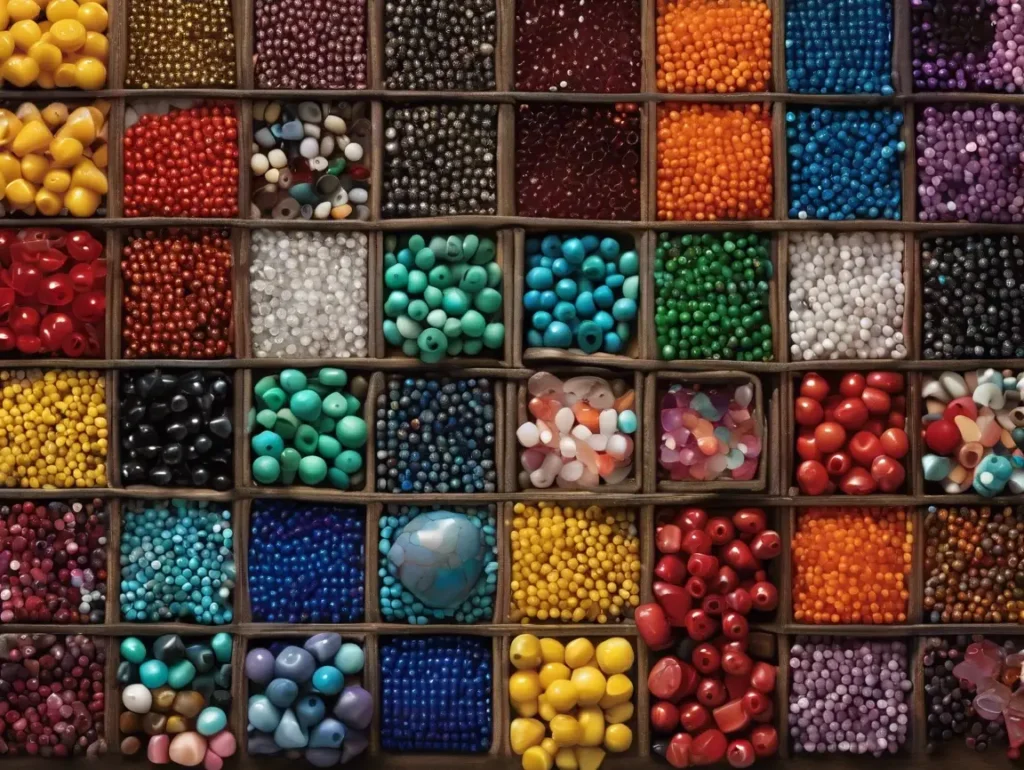
Colors are essential in many spiritual systems around the world for healing, rituals, and balancing the energy. Selecting beads specifically based on their hue transforms them from mere accents into instruments for change. That is why beading color meanings are so powerful when viewed through a spiritual lens.
Colors have energetic vibrations that match varying degrees of consciousness and body energy systems; they are not only visible. This notion is echoed in modern crystal healing, where beads are used to stimulate or balance the chakras—the body’s seven basic energy centers.
Chakra System and Color Alignment
Associated with a hue, each chakra controls particular bodily, emotional, and spiritual activities. Beaded jewelry that corresponds to the chakras is an effective approach to increase awareness and energy flow in these places.
Here is a breakdown of chakra-based mala beads color meanings:
| Chakra | Color | Bead Examples | Purpose |
|---|---|---|---|
| Root (Muladhara) | Red | Red Jasper, Garnet | Grounding, safety, physical force |
| Sacral (Svadhisthana) | Orange | Carnelian, Orange Calcite | Creativity, sexuality |
| Solar Plexus (Manipura) | Yellow | Citrine, Yellow Jade | Self-assurance, determination |
| Heart (Anahata) | Green | Aventurine, Malachite | Love, compassion, healing |
| Throat (Vishuddha) | Blue | Lapis Lazuli, Blue Lace Agate | Truth, communication |
| Third Eye (Ajna) | Indigo | Sodalite, Iolite | Insight, intuition |
| Crown (Sahasrara) | Purple/White | Amethyst, Clear Quartz | Consciousness, spirituality |
Meditation, chakra balancing rituals, reiki treatments, and daily wear employ bead patterns that utilize this color system. Whether you make a full chakra bracelet or just one or two essential color beads, your jewelry becomes a tool for energetic realignment.
What Spiritual Beading Color Meanings Suggest?
In a spiritual setting, understanding beading color meanings calls for symbolic literacy and intuition. Here is a simple guide to the spiritual interpretation of typical bead colors:
- 🔴 Red: Courage, power, passion; motivates action.
- 🟠 Orange: Promotes self-acceptance, sensuality, and joy; facilitates the flow of creativity.
- 🟡 Yellow: Promotes confidence, self-worth, and mental clarity; helps with decision-making.
- 🟢 Green: Heals, grows, and balances; calls for love and pardon.
- 🔵 Blue: Represents truth, communication, and peace, and helps to enhance vocal clarity.
- 🟣 Purple: Spiritual vision, wisdom, intuition; links to the higher self.
- ⚪ White/Clear: Protection, purity, and divine light; spiritual enlightenment.
- ⚫ Black: Absorbs negativity and provides protection, transformation, and grounding.
In spiritual beading techniques, color is sometimes employed to complement intentions, ceremonies, or personal development. A necklace made completely of purple amethyst beads may aid in intuitive development, while a bracelet of red and black may assist someone in grounding emotionally while increasing their energy field.
Making Spiritual Jewelry with a Purpose in Mind
When creating spiritually inspired beadwork, practitioners frequently beading color meanings with crystal characteristics, sacred numerals, or prayer sequences. As a result:
- A mala necklace may contain 108 beads in chakra color order; it is used in mantra meditation.
- Black onyx, tiger eye, and clear quartz might all be included in a protection bracelet to guard the aura and increase clarity.
- For heart healing, a love and forgiveness stack may use pink rose quartz and green aventurine.
Spiritual beading is beautiful in layers of intentionality. You are choosing vibration, energy, alignment, and purpose as well as a hue.
Spiritual Beading Colors from Many Cultures
There is more spiritual application of bead colors than only chakras or crystal healing. Worldwide in many different locations:
- In African mysticism, white beads are generally associated with ancestors and purity.
- In Islamic tasbih beads, green could stand for heavenly tranquility or paradise.
- According to Native American customs, turquoise beads stand for harmony with nature and protection.
These cross-cultural applications support the universal nature of beadwork color interpretations as a spiritual language. Color is a holy code—a link between the physical and spiritual, the personal and the invisible.
Meanings for Protection and Empowerment in Beading Colors
One of the most ubiquitous and ancient reasons individuals don beaded jewelry is protection. Across civilizations, people wear colored beads to protect themselves from spiritual harm, mental upheaval, or bodily danger. Knowing beading color meanings from the standpoint of protection helps you design jewelry that feels grounded, safe, and energetically empowered.
While some bead materials like obsidian or hematite are inherently protective due to their mineral makeup, the color of a bead also gives it an additional energetic defense. Let’s look at the most popular protective bead colors and how to use them in spiritual or everyday designs.
Protection Using What Color Bead?
Black is the most potent protective sign of all the bead colors. It roots the wearer in times of stress or uncertainty, absorbs negative energy, deflects mental attacks, and helps to balance her.
Other hues of protective beads consist of:
- Black: Absorption, boundary building, mental defense.
- Red: Physical vitality, bravery, and is associated with root chakra anchoring.
- White: Divine defense, purity, spiritual shielding.
- Blue: Truth shield, clear communication, emotional equilibrium.
- Brown: Grounding, Solidity, and Ancestral Link.
- Purple: Psychic protection, auric preservation.
A bracelet combining black tourmaline, red jasper, and white howlite is a classic protective combo—offering physical anchoring, energy sealing, and spiritual reinforcement.
You can purposefully create wearable energy fields for yourself or other people by knowing the meanings of beads’ colors in relation to protection.
Waist Beads and Their Cultural Interpretive Colors
Traditionally worn in West African societies, waist beads represent femininity, fertility, body awareness, and spiritual identity—not only decoration. Each strand tells a narrative, and each color is chosen with intention.
Here is a breakdown of typical waist bead colors and meanings:
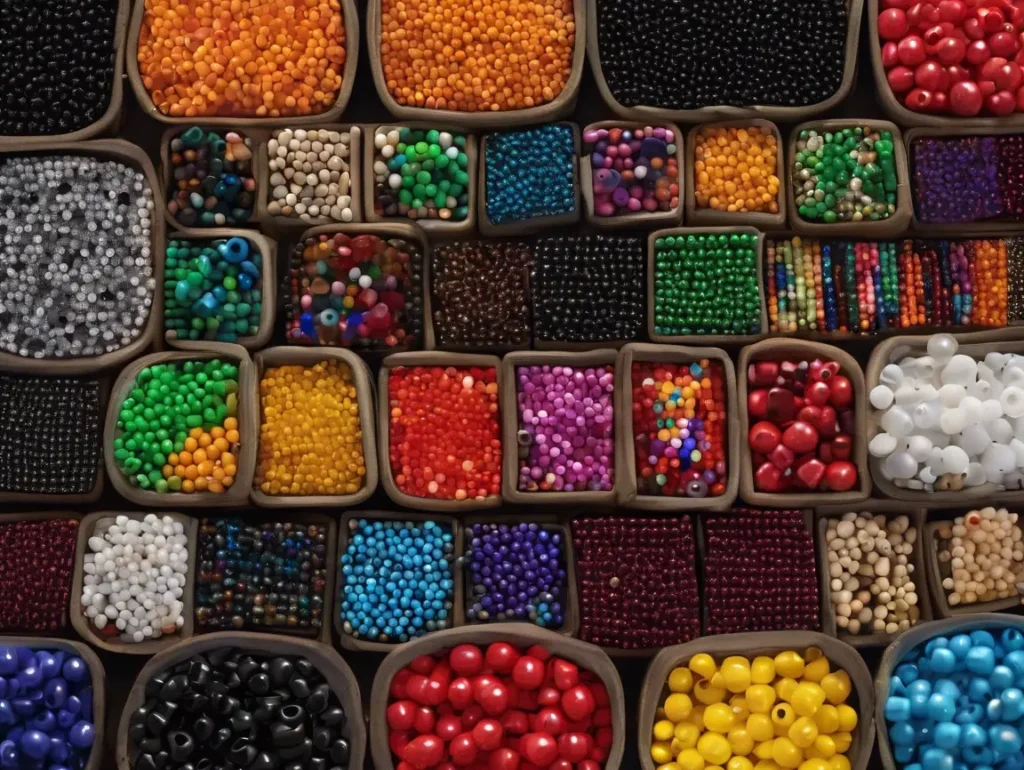
| Color | Waist Bead Interpretive Guide |
|---|---|
| 🔴 Red | Power, sensuality, and fertility |
| 🟢 Green | Abundance, expansion, harmonic interaction with the surroundings |
| 💗 Pink | Love; gentleness; emotional sensitivity |
| ⚫ Black | Protection; power; sacred feminine mystery |
| 🟠 Orange | Joy, confidence, sexuality |
| ⚪ White | Spiritual purity, divine vitality, inner light |
| 🔵 Blue | Peace, emotional clarity, ancestral connection |
| 🟤 Brown | Grounding, belonging, ancestral support |
Often, people purposefully stack these strands in various combinations. Black, gold, and crimson waist beads taken together can stand for protection, power, and appeal. A relaxing set of white and blue beads could be used to promote clarity and spiritual cleansing.
Applying beading color meanings to waist beads, users construct personal, symbolic decorations supporting both emotional and energy purposes.
Protection Beads in Ritual and Modern Use
Protection beading is now somewhat widespread in:
- Jewelry for chakra healing
- Bracelets and anklets with evil eyes
- Malas for meditation
- Men’s grounding wristwear
- Active waist beads with a purpose
- Strands for home protection are strung near doors or windows.
These patterns frequently incorporate protective hues with emblems like:
- Commonly blue, evil eye beads help to ward off envy or ill wishes.
- Cowrie shells, representing feminine riches and protection.
- Hamsa hands or gems, like black obsidian, for powerful defense.
The purpose of wearing protection-based beads is to control energy consciously, not to instill fear. When you comprehend the beading color meanings for protection, you can transition from reactive defense to proactive energy alignment.
Design Tip: Balance Protection Against Other Goals
Pure protection might occasionally feel confining or burdensome. To lighten the energy of an all-black or red bracelet, consider adding a few white, green, or blue beads:
- Promote recovery while maintaining protection.
- Balance physical energy and emotional tranquility.
- Change the vibration without sacrificing strength.
This layered approach to design shows a greater awareness of beading color meanings—where one color accentuates the other, so creating both durability and openness in your jewelry.
Designing with Color: Combining Bead Meanings
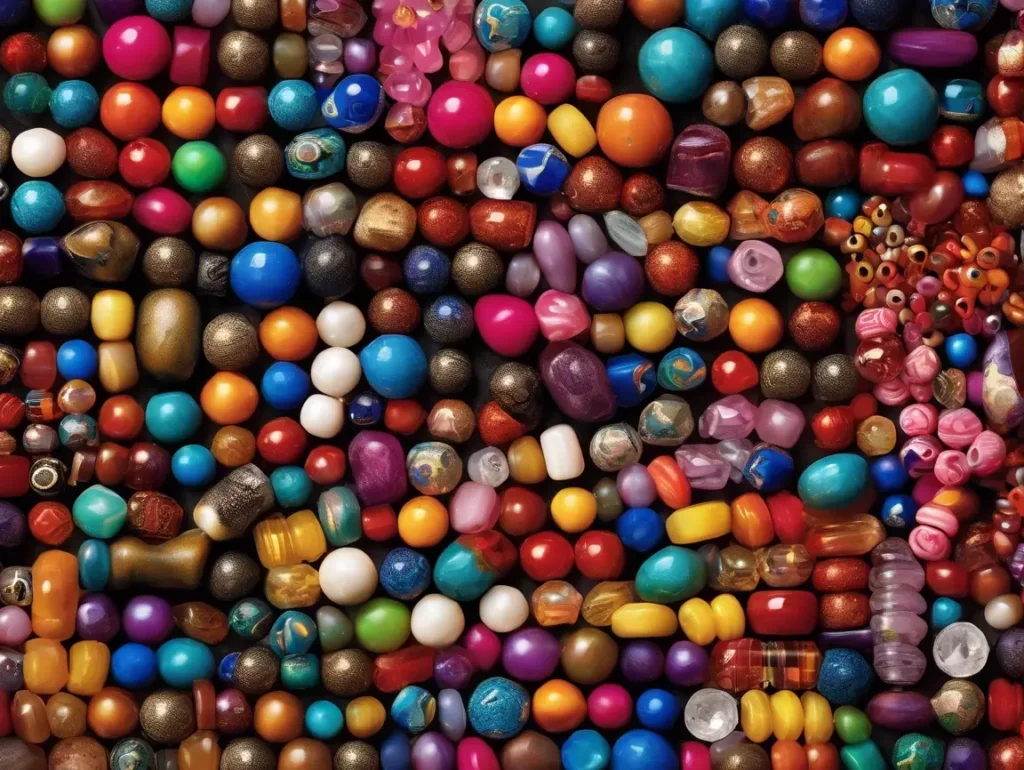
Although each bead color has significance on its own, the combinations of hues create deeper, more complex narratives. Like emotions are rarely single—joy can be blended with anxiousness, love can sit next to fear—color in beading becomes immensely strong when two or more colors work in harmony. Knowing how to mix bead colors depending on beading color meanings will enable you to make jewelry that not only looks great but also very closely matches energy and intention.
In bead design, you are arranging an emotional symphony while blending colors. Every hue has a different vibration; when done deliberately, the whole becomes more than the pieces taken together.
Selecting Bead Color Combinations for Specific Uses
Start by considering the goal behind your work. Are you seeking to advance forgiveness and love? Are you seeking grounding and protection? Do you possess confidence and dedication? Once you’ve determined your emotional or spiritual aim, you can use the Beading Color Meanings to choose a palette that matches that vibration.
Example Goals and Recommended Bead-Combining Strategies:
| Intention | Color Combining | Symbolic Meaning |
|---|---|---|
| Love + healing | Pink + green | Heart opening, compassion, and emotional development |
| Protection + power | Black + red | Grounding vigor, psychic defense |
| Calm + clarity | Blue + white | Peace, truth, spiritual direction |
| Joy + creativity | Orange + yellow | Energy, expression, mental clarity |
| Transform + insight | Purple + black | Spiritual awareness with an energetic shield |
| New beginnings | White + green + gold | Fresh vitality, plenty, and great enthusiasm |
Changes in gemstone choice, cultural symbolism, or personal resonance can alter these pairings; they remain flexible. A bracelet made of sodalite and clear quartz, for instance, has a distinct feel from one made of lapis lazuli and howlite, even if they both serve the same fundamental purpose.
Layering Feelings Over Color
One of the most effective applications of beading color meanings is emotional layering. Jewelry can be a map of your past, present, and future.
Think about a transitional life bracelet:
- Use black to ensure security during the transition.
- Green for past-pain healing.
- Yellow indicates assurance in fresh choices.
- The purpose of gold is to attract abundance.
This is more than simply a color scheme; it is a visual and energetic expression of emotional metamorphosis.
Advice on Combining Colors of Beads
- Odd numbers (3, 5, and 7) provide design, aim, fluidity, and rhythm.
- Anchor your work with a strong hue; let your principal objective guide you aesthetically.
- Red plus blue generates conflict but also harmony (fire against water).
- Add neutrals—white, black, and clear—to create emotional space and an energy reset.
Designing this method turns jewelry-making from ornamentation to dynamic narrative. The beads start to take center stage in a story: the blue ones expressing truth, the green ones fostering forgiveness, and the red ones calling forth audacity.
Colors Inspired by Nature and Culture
Nature provides lovely ideas for beaded color interpretations:
- 🌅 The colors of the sunset represent passion, change, and liberation, specifically red, orange, and pink.
- 🌊 Oceantones, including blue, green, and white, evoke emotional flow, healing, and spiritual clarity.
- 🌻 Earth tones (brown, gold, and olive) represent stability, prosperity, and holy connection.
Culturally, color pairings also have great weight:
- In African beadwork, black and red symbolize power, while white and blue symbolize protection.
- Rainbow patterns in chakra jewelry represent total energy harmony.
- Black and clear quartz are associated with protection and clarity in Wiccan and crystal-based traditions.
The cultural and natural signals behind Beading Color Meanings will enhance your design even more, especially if your audience or aim is spiritual.
Beading Color Meanings Across Cultures: An International Language of Symbolism
While we’ve looked at the emotional and spiritual resonance of beading color meanings on a personal level, it’s also vital to note that the power of color in beadwork goes beyond individual experiences—it’s based in culture, history, and genealogy all around the world. Various hues have significant symbolic value throughout history, and these meanings frequently influence beadwork still made and worn today.
African Customary Practices and Waist Beads
In many African societies, waist beads are made with color symbolism to symbolize turning points in a woman’s life—coming of age, fertility, marriage, or even spiritual protection. Red beads might represent energy and power. Blue connotes peace and healing. Yellow sometimes represents wealth and success.
These hues are a direct mirror of cultural memory and identity, not selected at will. As an example, the Yoruba people in Nigeria wear white beads to protect themselves and connect with the Orisha Obatala, who is the goddess of knowledge and purity.
Native American Beadwork Symbolism in Colors
Among many Native American tribes, bead colors have spiritual and naturalistic significance. Black can stand for the west and the introspective path. Red may represent the east, beginnings, or life power. White might stand for the north, clarity, or ancient knowledge. These color connections, which vary from tribe to tribe, intricately link tribal narrative, ceremonial attire, and sacred artifacts.
A Lakota or Cherokee beaded piece is a prayer, a blessing, and a history, not only a decoration.
Asian Symbolism: Harmony by Colors
In ancient Chinese and Japanese culture, the five elements (wood, fire, earth, metal, and water) and the yin-yang theory are linked to the colors used in beadwork. Red beads can channel life, fire energy, and good fortune. Green might line up with wood and expansion. Black speaks of water, mystery, and protection.
Buddhist traditions also use prayer beads, sometimes known as mala, which follow color systems. As an illustration:
- Blue beads: Wisdom and cleansing.
- Yellow beads: Ground and raise concentration.
- Red beads: Power and life force.
These decisions are active tools for certain spiritual results, not beautiful ones.
Latin American Color Codes for Spiritual Jewelry
In Latin America, particularly in areas affected by Afro-Caribbean religions like Santería and Candomblé, colored beads symbolize Orishas (holy creatures). One wears beads as protective charms and amulets. Beads in blue and white are associated with Yemayá, the ocean goddess, red and white with Changó, the thunder deity, and green with Osain, the healer.
Here, the color meanings of the beads link worshippers to ancestors, spirit guides, and the elements.
Color is the Cultural Thread
This illustration demonstrates that beadwork color meanings are a worldwide language—a means of marking transitions, showing allegiance, requesting protection, or calling in transformation. Every color in a beaded bracelet, necklace, or waistband represents a sentence in that language. A well-made work is not only attractive but also bilingual—that is, it speaks to the soul and the culture concurrently.
Stranding your beads also connects to old meanings, cultural memories, and energy.
FAQ on Beading Color Meanings
What is the spiritual significance of the different colored beads?
The colors of beads give enormous mystical connotations. For example:
- Black beads symbolize protection and strength.
- Red beads represent energy and grounding.
- Blue beads enhance clarity and communication.
- White beads suggest purity and spiritual connection.
While these spiritual interpretations exhibit minor variations across cultures, the emotional resonance is consistent on a global scale.
Which bead color provides protection?
Black is historically the most frequently occurring protective bead color. Black beads are used to absorb negative energy and increase resilience. In some traditions, red or dark blue beads are worn for spiritual protection and psychic defense.
What are green and purple beads meant to represent?
Usually connected with development, wealth, fertility, and heart chakra healing, green beads are also related to Conversely, purple beads stand for knowledge, intuition, and spiritual illumination. When taken as a whole, they symbolize harmony between spiritual wisdom and financial wealth.
Do mood bead colors genuinely represent emotions?
Mood beads react to temperature variations, so their response may be rather weakly related to emotional states. While not scientifically correct, mood bead colors are frequently used as analogies for interior feelings—blue for peace, red for excitement, green for balance, and black for stress.
Final Thoughts: Wearing Colors with Purpose
More than just aesthetic decisions, beading color meanings are statements of energy, mood, history, and culture. Learning how various hues appeal to your spiritual journey and emotional state can help you to create meaningful jewelry reflecting your inner world. Each bead serves as a link between art and intention, whether you’re creating it for protection, seduction, or expression. Keep this in mind the next time you string a bracelet or choose a gemstone: you’re not just making something pretty, you’re making something that talks.

